
How to Use AS7341: Examples, Pinouts, and Specs
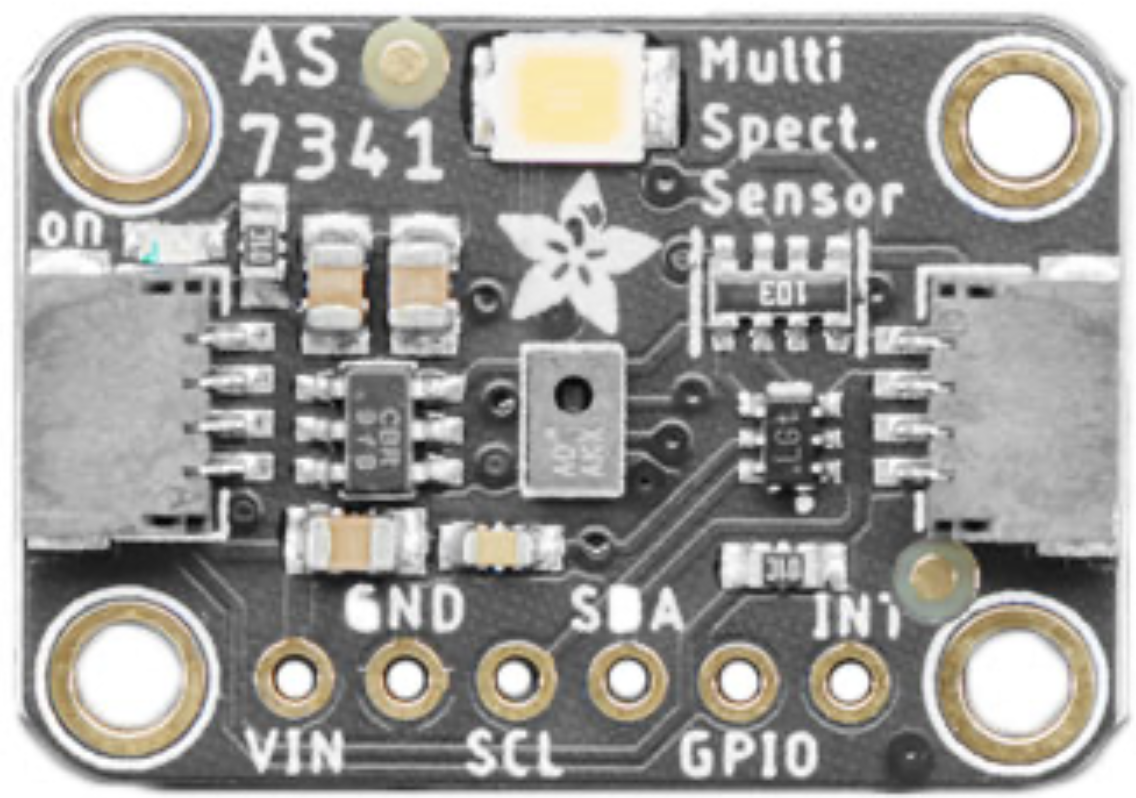
 Design with AS7341 in Cirkit Designer
Design with AS7341 in Cirkit DesignerIntroduction
The AS7341 is a highly versatile spectral sensor manufactured by Adafruit. It is designed to measure light intensity across multiple wavelengths, making it ideal for applications requiring precise color and light analysis. The sensor features 11 channels for color detection, enabling advanced optical measurements in a compact form factor.
Explore Projects Built with AS7341
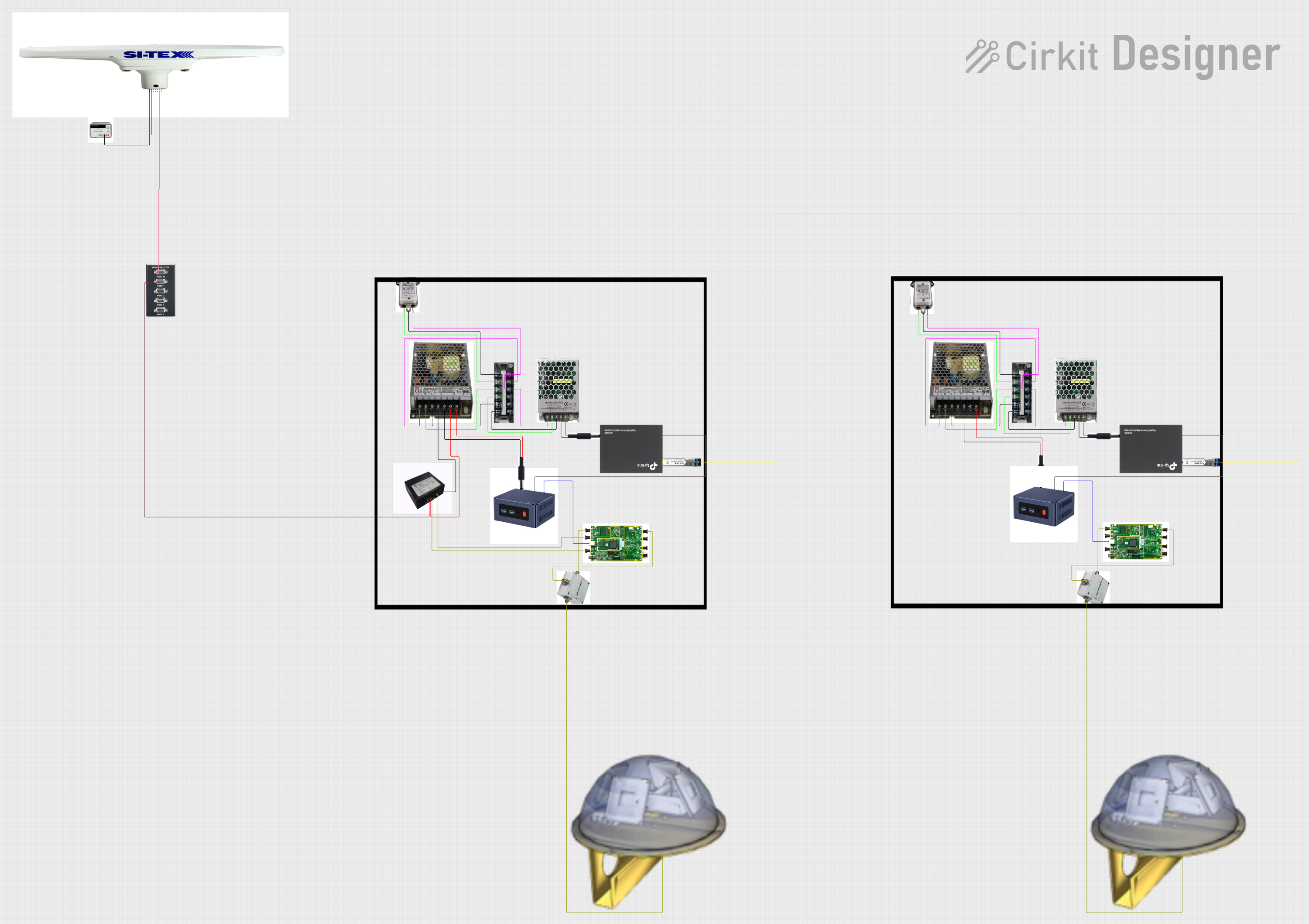
 Open Project in Cirkit Designer
Open Project in Cirkit Designer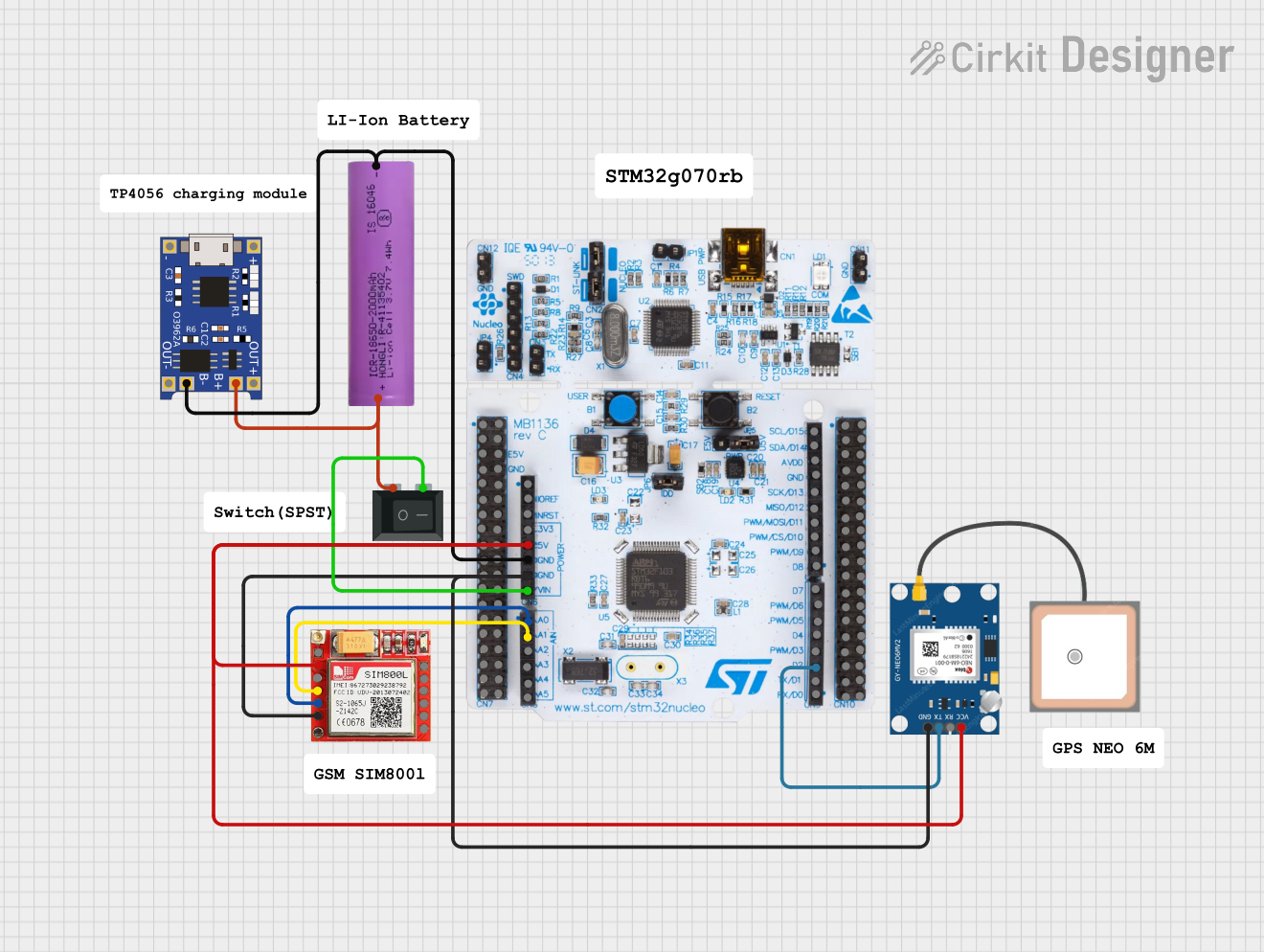
 Open Project in Cirkit Designer
Open Project in Cirkit Designer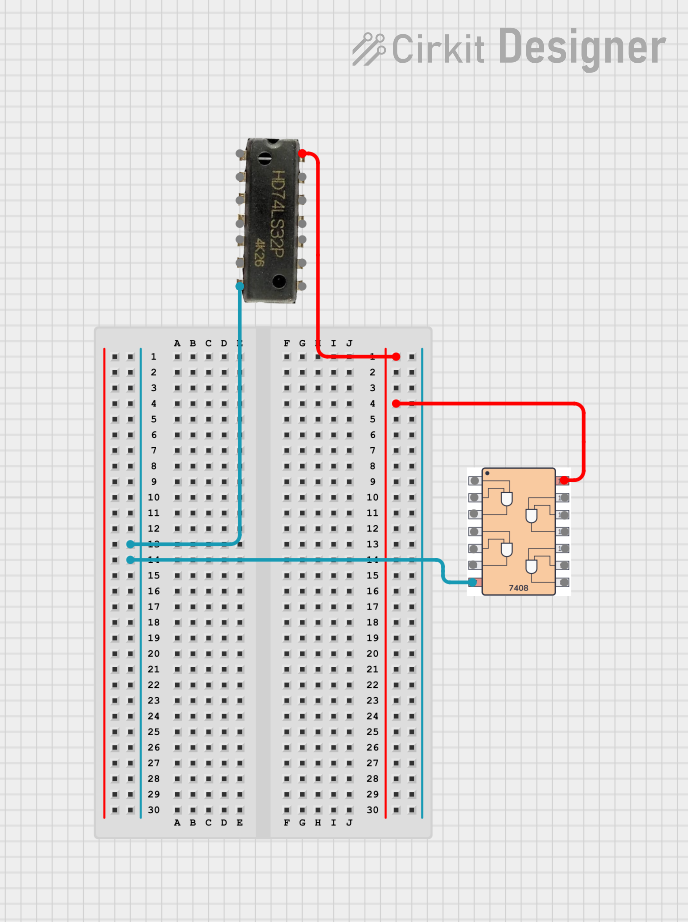
 Open Project in Cirkit Designer
Open Project in Cirkit Designer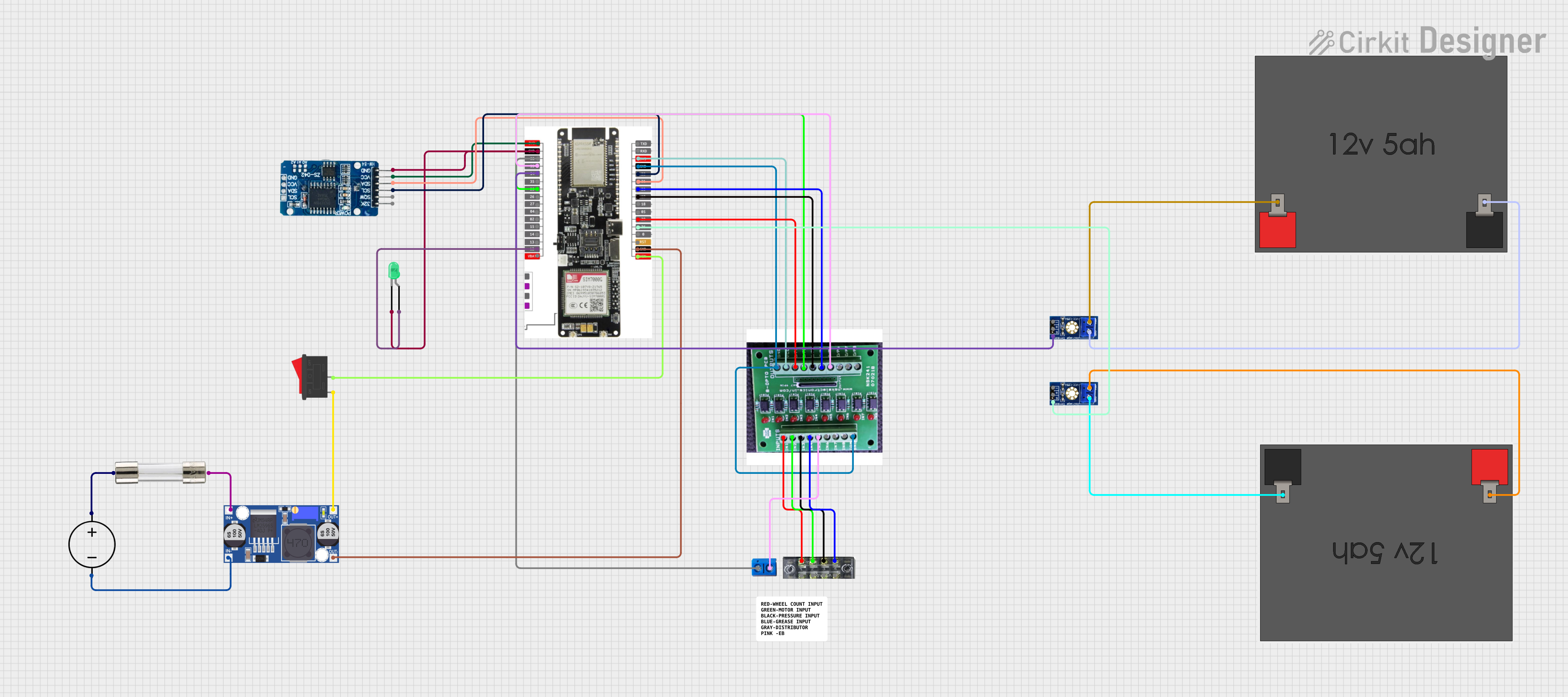
 Open Project in Cirkit Designer
Open Project in Cirkit DesignerExplore Projects Built with AS7341

 Open Project in Cirkit Designer
Open Project in Cirkit Designer
 Open Project in Cirkit Designer
Open Project in Cirkit Designer
 Open Project in Cirkit Designer
Open Project in Cirkit Designer
 Open Project in Cirkit Designer
Open Project in Cirkit DesignerCommon Applications and Use Cases
- Color sensing: Detect and analyze colors in various environments.
- Ambient light sensing: Measure light intensity for smart lighting systems.
- Agriculture: Monitor plant health by analyzing light absorption and reflection.
- Display calibration: Ensure accurate color reproduction in screens and monitors.
- Scientific research: Perform spectral analysis for experiments and studies.
Technical Specifications
The AS7341 is a powerful and compact spectral sensor with the following key specifications:
| Parameter | Value |
|---|---|
| Operating Voltage | 3.3V (logic level) |
| Communication Interface | I²C (up to 1 MHz) |
| Spectral Channels | 11 (visible and near-infrared wavelengths) |
| Spectral Range | 350 nm to 1000 nm |
| Operating Temperature | -40°C to +85°C |
| Power Consumption | 0.7 mA (typical) |
| Package Dimensions | 2.0 mm x 2.0 mm x 0.75 mm |
Pin Configuration and Descriptions
The AS7341 sensor is typically available on a breakout board from Adafruit. Below is the pinout for the breakout board:
| Pin Name | Description |
|---|---|
| VIN | Power input (3.3V or 5V). Provides power to the sensor. |
| GND | Ground connection. |
| SDA | I²C data line. Used for communication with a microcontroller. |
| SCL | I²C clock line. Used for communication with a microcontroller. |
| INT | Interrupt pin. Can be used to signal the microcontroller when data is ready. |
| LDR | LED driver pin. Can control an external light source for measurements. |
Usage Instructions
How to Use the AS7341 in a Circuit
- Power the Sensor: Connect the VIN pin to a 3.3V or 5V power source and the GND pin to ground.
- Connect I²C Lines: Connect the SDA and SCL pins to the corresponding I²C pins on your microcontroller.
- Optional Connections:
- Use the INT pin to receive interrupts from the sensor.
- Connect the LDR pin to an external LED if additional illumination is required.
- Install Required Libraries: If using an Arduino, install the Adafruit AS7341 library via the Arduino Library Manager.
Important Considerations and Best Practices
- Voltage Levels: Ensure the I²C lines are at 3.3V logic levels. Use a level shifter if your microcontroller operates at 5V.
- Illumination: For accurate measurements, use a consistent and stable light source. The LDR pin can help control an external LED.
- I²C Address: The default I²C address for the AS7341 is
0x39. Ensure no other devices on the I²C bus share this address. - Calibration: For precise color measurements, calibrate the sensor in your specific environment.
Example Code for Arduino UNO
Below is an example of how to use the AS7341 with an Arduino UNO:
#include <Wire.h>
#include "Adafruit_AS7341.h"
// Create an instance of the AS7341 sensor
Adafruit_AS7341 as7341;
void setup() {
Serial.begin(115200); // Initialize serial communication
while (!Serial); // Wait for the serial monitor to open
// Initialize I²C communication and the AS7341 sensor
if (!as7341.begin()) {
Serial.println("Failed to initialize AS7341 sensor!");
while (1); // Halt execution if initialization fails
}
Serial.println("AS7341 sensor initialized successfully!");
}
void loop() {
// Read and print the light intensity for all 11 channels
for (int i = 0; i < 11; i++) {
uint16_t channelData = as7341.readChannel(i);
Serial.print("Channel ");
Serial.print(i);
Serial.print(": ");
Serial.println(channelData);
}
delay(1000); // Wait 1 second before the next reading
}
Troubleshooting and FAQs
Common Issues and Solutions
Sensor Not Detected on I²C Bus:
- Ensure the SDA and SCL lines are correctly connected to the microcontroller.
- Verify the I²C address (
0x39) and check for conflicts with other devices. - Use pull-up resistors (typically 4.7 kΩ) on the SDA and SCL lines if not already present.
Inaccurate Measurements:
- Ensure the sensor is not exposed to direct sunlight or other extreme lighting conditions.
- Use a stable and consistent light source for measurements.
- Perform calibration in the specific environment where the sensor will be used.
Interrupt Pin Not Working:
- Verify that the INT pin is correctly connected to a digital input pin on the microcontroller.
- Check the sensor's configuration to ensure interrupts are enabled.
FAQs
Q: Can the AS7341 measure UV or infrared light?
A: The AS7341 primarily measures visible and near-infrared light, with a spectral range of 350 nm to 1000 nm. It does not measure UV light.
Q: What is the maximum I²C speed supported by the AS7341?
A: The AS7341 supports I²C communication speeds of up to 1 MHz (Fast Mode Plus).
Q: Can I use the AS7341 with a 5V microcontroller?
A: Yes, but you must use a level shifter to convert the 5V logic levels to 3.3V for the I²C lines.
Q: How do I control an external LED with the LDR pin?
A: The LDR pin can be connected to the control input of an LED driver circuit. Refer to the Adafruit AS7341 library for examples of how to configure the LDR pin.
This concludes the documentation for the AS7341 spectral sensor. For further assistance, refer to the Adafruit product page or community forums.